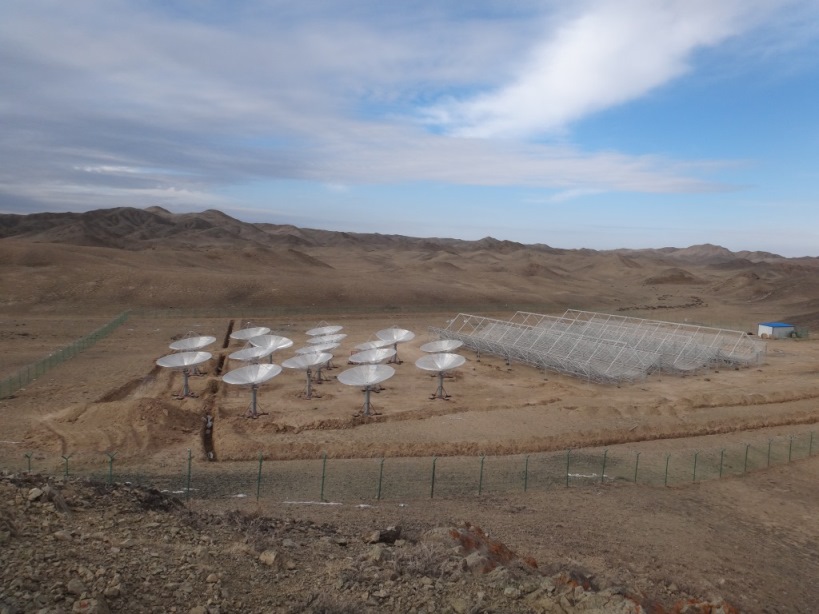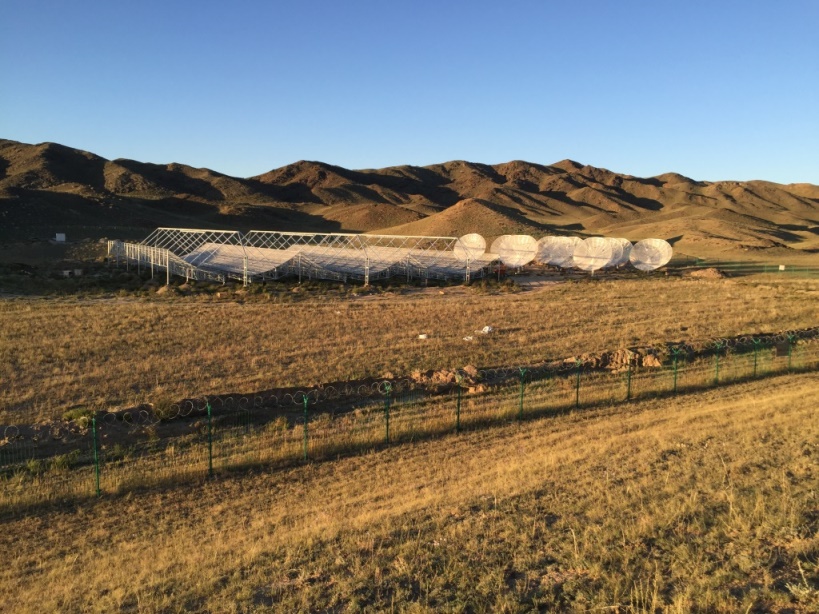The dark energy radio detection experiment (also called the Tianlai project) is a scientific project carried out by NAOC. The aim of this experiment is to use neutral hydrogen as a tracer to map out the large scale structure of the Universe with high precision, and by using baryon acoustic oscillations in the power spectrum as standard rulers. This project will measure the cosmic distance and Hubble expansion rate at different redshifts, from which the dark energy equation of state can be inferred.
The basic plan of the experiment is to make an intermediate redshift (0<z<3) 21cm intensity mapping survey. The experiment will use a parabolic cylindrical telescope array. The cylindrical reflector is placed in the north-south direction, with receiver units placed along its focus line, and a number of such cylinders in parallel will form the whole array. The estimated size of the full array is about 120m x 120m, with about 2000 dualpolarization receiver units. Currently the Phase I pathfinder experiment (2012-2016) is being carried out, which will test the basic principles and key technologies for this experiment.
The Tianlai experiment is a project that incorporates international collaboration. Currently, scientists from North America and France have participated in the experiment. The site for the telescope array is located at Hongliuxia in Balikun county in the eastern part of Xinjiang, at an elevation of about 1500m above sea level. The surrounding environment is a sparsely populated steppe with little artificial radio interference.



Address: 20A Datun Road, Chaoyang District, Beijing, China code: 100012
Tel: 010-64888708 E-mail: naoc@nao.cas.cn

